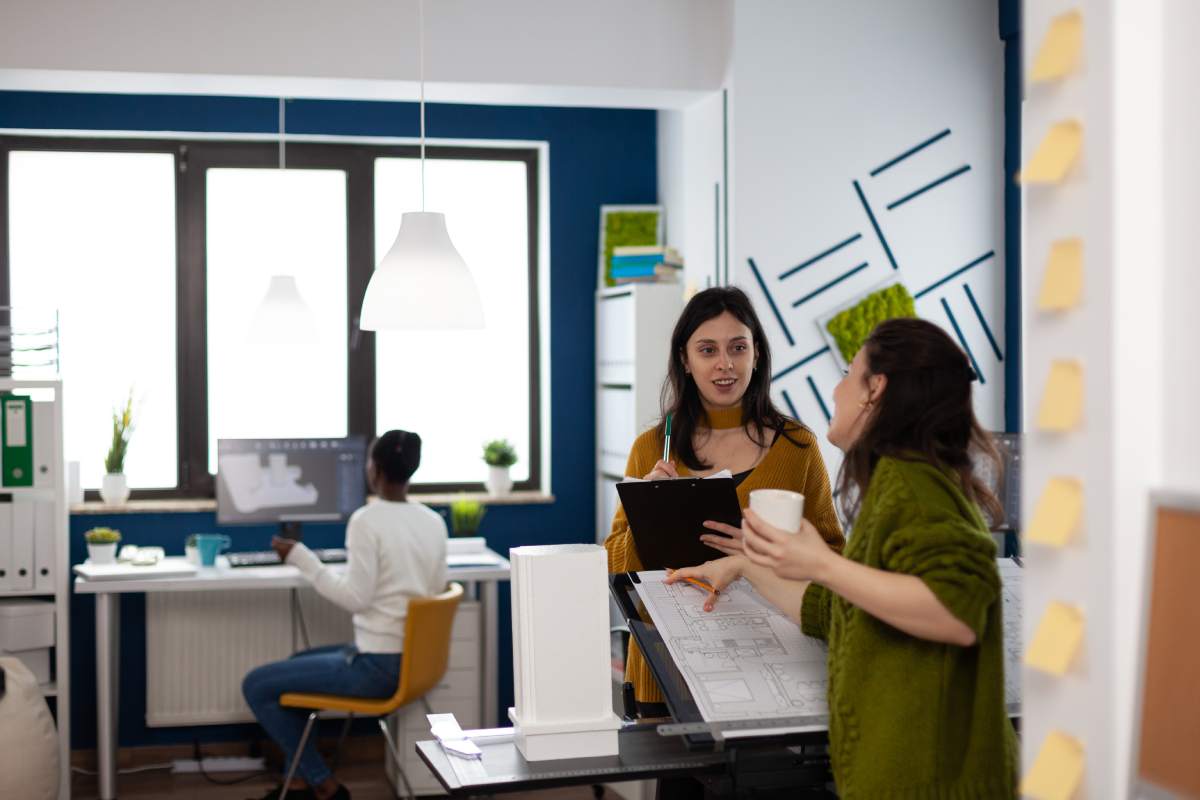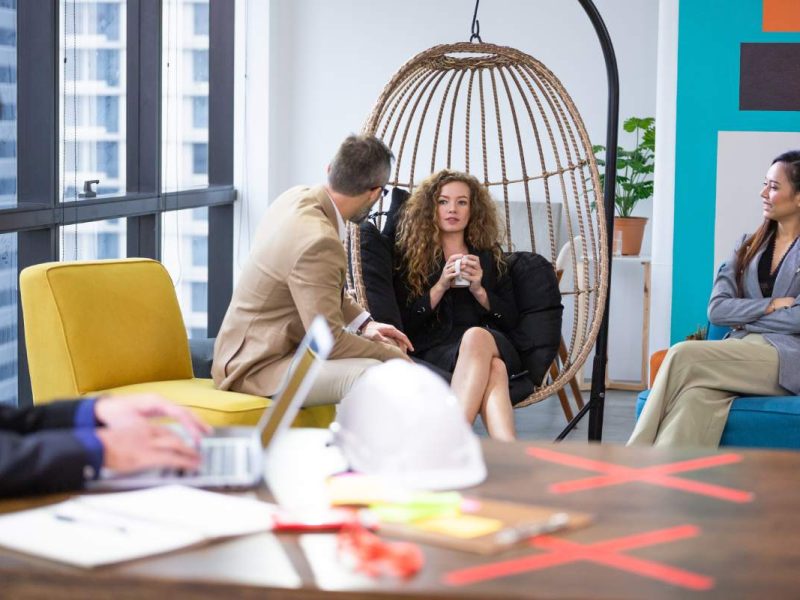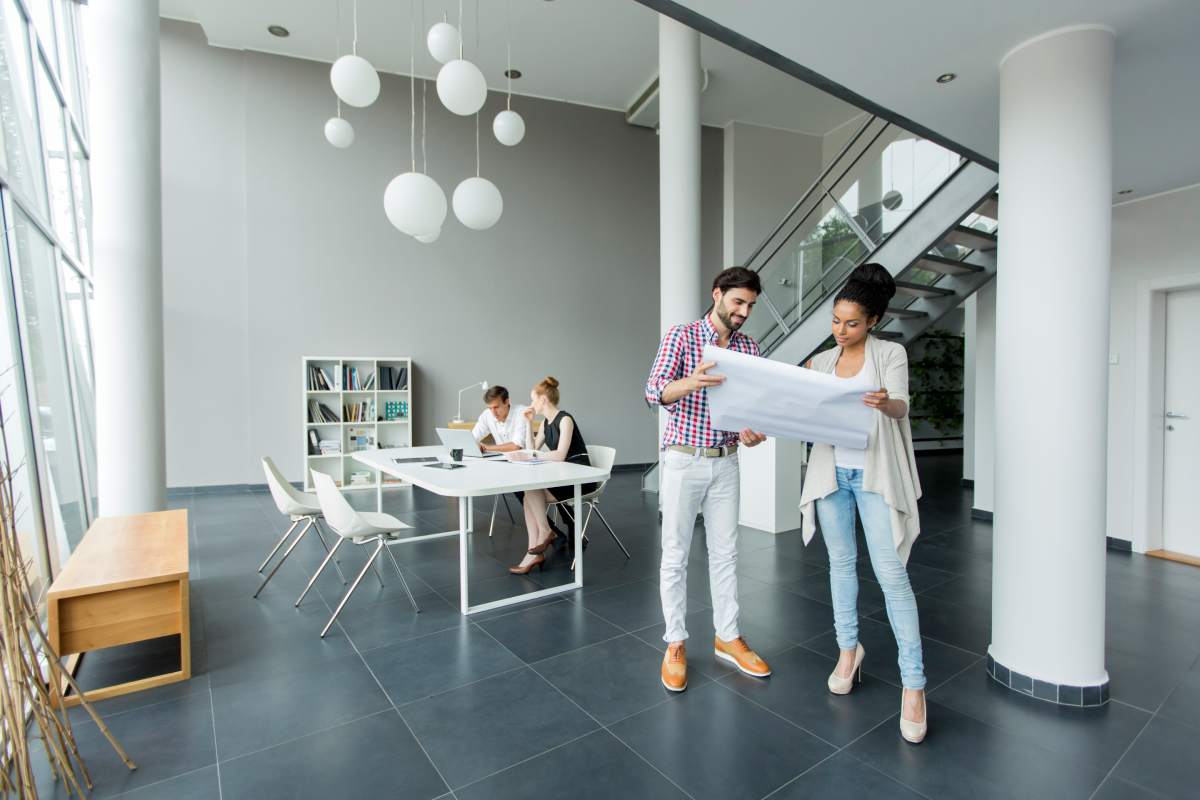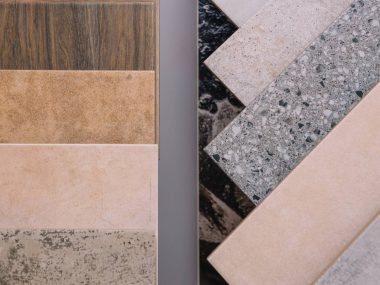Renovating an office is a big deal and not just about making things look good. It’s a direct hit on company culture and productivity, too. In Australia, the cost of office renovation varies widely depending on the project size.
Whether you are planning a quick update or a complete overhaul, understanding the costs is crucial. It’s also important to think about how your design choices will impact the work environment and the overall success of your organization.
This article takes a look at the costs involved in office renovations in Australia and how smart office design can boost productivity and shape company culture.
How Does Office Design Affect Productivity?
Office design is more than just an aesthetic choice; it directly impacts how employees feel, think, and perform at work. A well-designed office can enhance productivity, while a poorly designed one can do the opposite. Here’s a look at the key ways office design influences productivity.
1. Layout and Space Utilization
The layout of an office determines how employees interact and move throughout the day. Open floor plans, for example, encourage collaboration and communication, which can be beneficial for team projects and creativity.
However, they can also lead to noise and distractions, which might reduce individual focus. On the other hand, a more segmented layout with private offices or cubicles can provide quiet spaces for concentration, but it may limit spontaneous collaboration.
Striking a balance, such as having a mix of open areas and private spaces, allows employees to choose the environment that best suits their tasks, enhancing overall productivity.
2. Lighting
Lighting plays a crucial role in office productivity. Natural light is the most beneficial, as it reduces eye strain, boosts mood, and helps regulate sleep patterns, leading to better focus and energy levels. Studies have shown that employees working in offices with ample natural light report higher levels of satisfaction and productivity.
When natural light is limited, high-quality artificial lighting that mimics daylight can be a good substitute. On the contrary, poor lighting can lead to stress, fatigue, headaches, and a decrease in productivity.

3. Ergonomics
Ergonomics refers to designing the workplace to fit the needs of the employees, ensuring comfort and reducing the risk of injury. Ergonomically designed furniture, such as adjustable chairs, desks, and computer monitors, can prevent strain on the body, which is essential for maintaining productivity throughout the day. When employees are comfortable, they are less likely to experience discomfort or pain, allowing them to focus better on their tasks.
4. Colour and Decor
The colours used in an office can also impact productivity. Certain colours, like blue and green, are known to promote calmness and focus, while others like red can increase energy and excitement, which may be useful in creative environments. However, too much of any colour can be overwhelming. A well-balanced colour scheme, along with plants and artwork, can create a pleasant atmosphere that enhances mood and productivity.
5. Noise Control
Noise is one of the most common distractions in the workplace. Uncontrolled noise levels, especially in open-plan offices, can lead to decreased concentration and productivity. Implementing sound-absorbing materials, such as carpets, curtains, and acoustic panels, can help reduce noise. Additionally, providing quiet zones or soundproof rooms can allow employees to work without interruptions when they need to focus.
6. Air Quality and Temperature
The quality of air and temperature in an office can significantly affect how employees feel and perform. Cleaning the office is one thing but inadequate ventilation or high levels of pollutants, can lead to health issues and decreased cognitive function.
Similarly, uncomfortable temperatures, whether too hot or too cold, can distract employees and reduce their productivity. Maintaining a well-ventilated office with a comfortable temperature range is essential for keeping employees healthy and focused.
How Does Office Design Affect Company Culture?
Office design is a powerful tool that shapes company culture. The physical environment where employees work can reflect and reinforce the values, norms, and behaviours that define a company. Here’s how different aspects of office design influence company culture.
1. Layout and Interaction
The layout of an office plays a significant role in how employees interact with each other. An open floor plan, for example, encourages communication and collaboration, fostering a culture of openness and teamwork.
In contrast, a more segmented layout with private offices can promote a culture of independence and focused work. The choice of layout should align with the company’s cultural goals. For example, a company that values innovation and creativity might benefit from spaces that encourage spontaneous interactions, such as communal areas and breakout rooms.
2. Flexibility and Adaptability
A flexible office design allows the workspace to adapt to the changing needs of employees and the organization. This could include movable furniture, modular workstations, and multi-purpose spaces. Flexibility in design signals a company culture that values adaptability, agility, and employee autonomy.
It shows that the company is open to change and values the input and needs of its employees. This can help foster a culture where employees feel empowered to take initiative and where innovation is encouraged.

3. Brand Identity and Values
The design of an office can visually communicate the company’s brand identity and core values. For instance, a company that prioritizes sustainability might incorporate eco-friendly materials and energy-efficient systems into its office design. A tech company known for innovation might have a sleek, modern design with cutting-edge technology.
These design elements serve as constant reminders of the company’s mission and values, reinforcing them in the daily lives of employees. When employees see these values reflected in their environment, it helps create a strong, cohesive culture.
4. Comfort and Well-being
An office that prioritizes employee comfort and well-being demonstrates a company culture that values its people. This can be achieved through ergonomic furniture, natural lighting, and spaces designed for relaxation and socialization. When employees feel that their well-being is cared for, it fosters a culture of trust, respect, and loyalty.
This kind of environment encourages employees to bring their best selves to work, leading to higher morale and a stronger, more positive culture.
5. Inclusivity and Diversity
Office design can also promote inclusivity and diversity by providing spaces that cater to different work styles and needs. For example, offering quiet rooms for focused work, collaborative spaces for team projects, and accessible facilities for employees with disabilities reflects a culture that values diversity and inclusion. When the office environment is designed to accommodate everyone, it sends a message that the company respects and values all employees, contributing to a more inclusive and supportive culture.
6. Social Spaces
Social spaces like lounges, kitchens, and communal areas play a crucial role in shaping company culture. These spaces encourage informal interactions and help build relationships among employees. A company that invests in creating inviting social spaces signals that it values community and connection among its employees. This can lead to a more cohesive and collaborative culture where employees feel connected to each other and to the company as a whole.
How Much Does an Office Renovation Cost in Australia?
The cost of an office renovation in Australia can vary widely depending on several factors, including the size of the office, the scope of the renovation, the quality of materials used, and the location. Here’s a general breakdown:
1. Basic Renovation
- Cost: Approximately AUD 500 to AUD 1,000 per square meter.
- Details: A basic renovation typically includes cosmetic updates such as new paint, flooring, and lighting. It might also involve minor modifications to the layout or furniture.
2. Mid-Range Renovation
- Cost: Approximately AUD 1,000 to AUD 2,000 per square meter.
- Details: This level of renovation might include more significant changes such as updating the layout, installing new office partitions, upgrading HVAC systems, or incorporating some custom finishes and fixtures.
3. High-End Renovation
- Cost: Approximately AUD 2,000 to AUD 4,000+ per square meter.
- Details: A high-end renovation could involve a complete overhaul of the space with premium materials, custom furniture, advanced technology systems, and extensive changes to the layout and design.
4. Additional Costs
- Permits and Approvals: Depending on the scope of the renovation, you may need to factor in the cost of permits and approvals, which can range from a few hundred to several thousand dollars.
- Project Management: Hiring a project manager can add 10-15% to the overall cost but can be crucial for ensuring the renovation stays on budget and schedule.
- Unexpected Costs: It’s also wise to set aside an additional 10-20% of the budget for unexpected expenses or contingencies.
5. Regional Variations
- Location: Renovation costs can also vary depending on the location within Australia. Major cities like Sydney and Melbourne tend to have higher costs due to higher demand and more expensive labour, while regional areas may be more affordable.
6. Size of the Office
- Office Size: The larger the office space, the higher the overall cost, but the per-square-meter cost may decrease due to economies of scale.
Example Cost for a Medium-Sized Office (200 square meters):
- Basic Renovation: AUD 100,000 to AUD 200,000
- Mid-Range Renovation: AUD 200,000 to AUD 400,000
- High-End Renovation: AUD 400,000 to AUD 800,000+
Suppose you would like to get to know more about what a renovation company could do and have a specific quotation just for you. In that case, we recommend consulting with Alpha Ceilings and Partitions, with over 35 years of experience is a proven track record by itself. They specialize in fit-outs and interior renovations for your commercial areas or office spaces.
Conclusion
When you’re thinking about sprucing up your office, it’s not just about the physical space. It’s a chance to make sure your work environment reflects your company’s values and goals. Renovation costs in Australia can vary a lot, but with a well-planned project, you can see big returns by creating a positive and productive company culture.
By carefully considering both the financial aspects and the design impact, businesses can create a workspace that not only looks great but also supports employee well-being, collaboration, and overall success.







